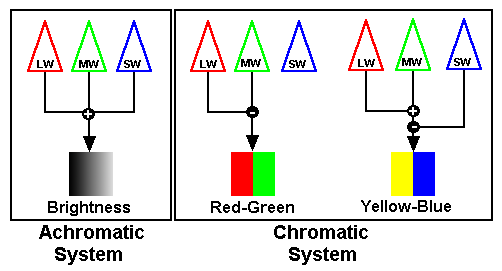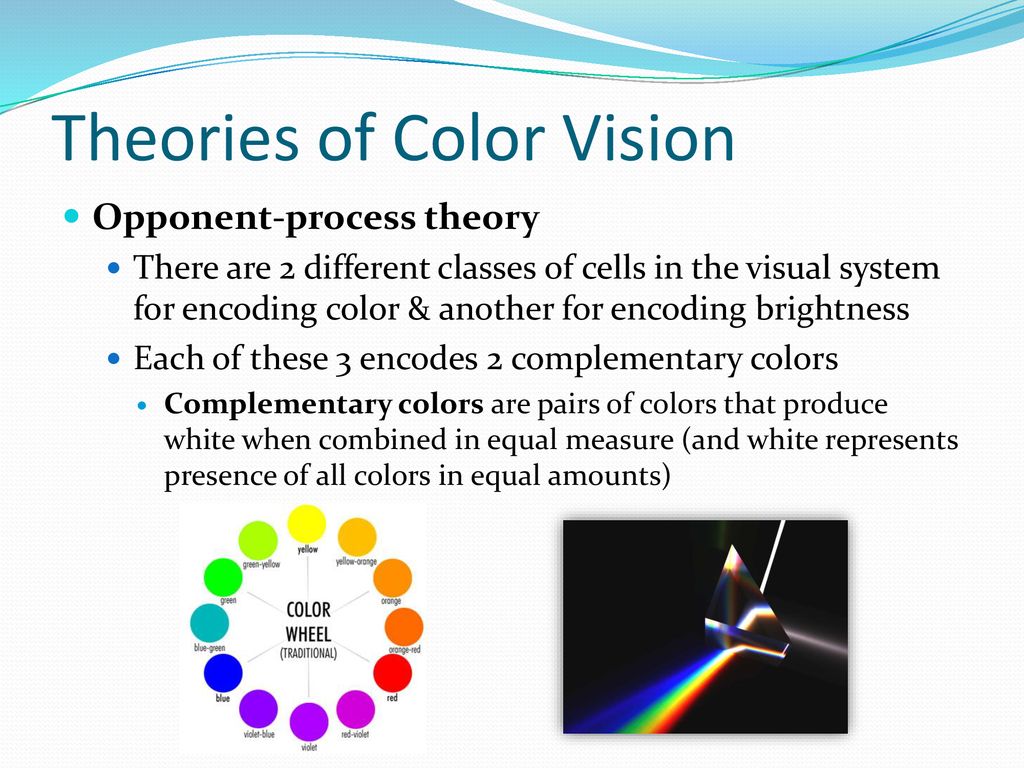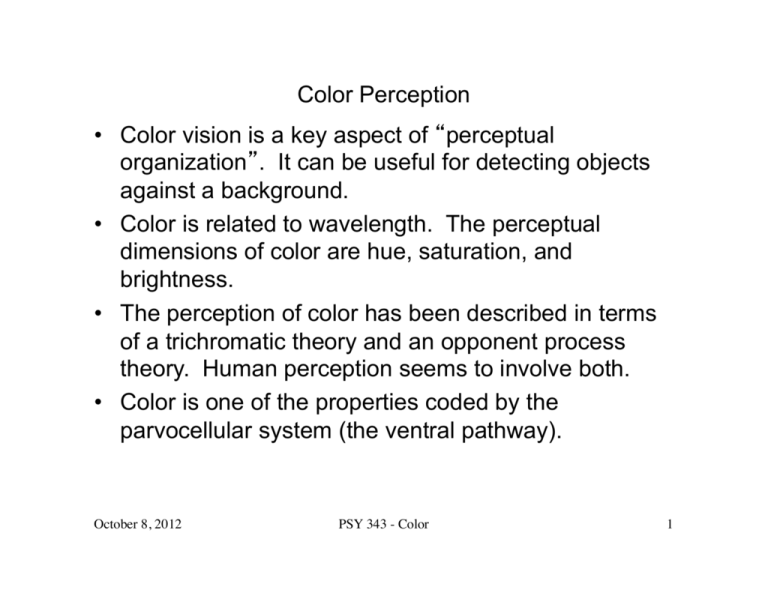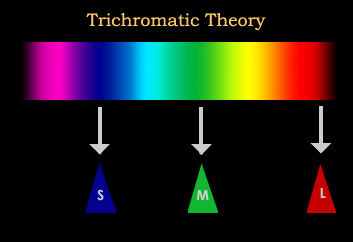Explain the Differences Between Trichromatic Theory & Opponent-process Theory
OTHER SETS BY THIS CREATOR. There are 3 diff types of color receptors that are specialized to respond to red green and blue.
This theory says that our eyes perceive colors due to three receptors present in the retina.

. This theory states that our cones send information to retinal ganglion cells that respond to pairs of colors red-green blue-yellow black-white. While the trichromatic theory explains how light is perceived by the cone cells and how signals are sent to the brain. Cone photoreceptors are linked together to form three opposing colour pairs.
- trichromatic could not explain after images Define the opponent process theory of color vision. Redgreen blueyellow or blackwhite. So opponent process theory was first proposed by a guy named Ewald Hering who was a German physiologist we see here.
As you can see the trichromatic theory doesnt explain the afterimage you just witnessed. In fact there are three types of cones found in the retina each sensitive to either red green or. Final Words In summary the trichromatic theory of color vision is a theory that states that all human beings have three types of cone cells in the retina in their retinas that are responsible for detecting three different.
Blueyellow redgreen and blackwhite. The trichromatic theory of color holds that white light is split into primary colors while opponent-process theory holds that component colors are merged into three different signals. Another difference between the two theories is that the opponent-process theory considers afterimages while the trichromatic theory does not.
Answer will include that the trichromatic theory states that there are three types of cones red green and blue while the opponent-process theory states that vision analyzes colors into eitheror messages of red or green yellow or blue and black or white. What is the difference between trichromatic theory and opponent process. Other colors are combinations of the three primary colors.
The opponent process theory explains how the cones connect to the ganglion cells and how opposing cells are excited or inhibited by certain wavelengths of light. On the other hand the opponent process theory helps explain how these cones connect to the nerve cells that determine how we actually perceive a. To unlock this lesson you must.
When one color receptor is continuously fired basically the. So we need an additional theory which complements the trichromatic theory and this is the opponent process theory. The complementary color theory explains which wavelengths translate to which colors and how.
Explain the trichromatic theory of color vision and the opponent process theory from PSYCH 110 at Northwestern University. Color vision is based on the type of incident light on the cone cells of retina. The opponent process theory is another theory of vision.
These receptors fire at diff rates to allow us to see color. Th e trichromatic theory says that there are three different kinds of cones in the retina and each cone contains one of three different light-sensitive chemicals called opsins. Today it is believed that both theories can be used to explain how the color vision system operates and that each theory applies to a different level of the visual process.
All the other colors can be mixed from these three primary colors. If a signal from only one type of cone is received then the corresponding color will be seen. Each of the three opsins is most responsive to wavelengths that correspond to each of the three primary colors.
Explain the trichromatic theory and opponent process theories of color from PSYC 102 at University of British Columbia. The trichromatic theory explains how the three types of cones detect different light wavelengths. This is where the opponent-process theory comes in Hering 1920.
Color vision at the receptor level. The trichromatic theory of color holds that color perception occurs primarily in the retina while opponent-process theory holds that color perception occurs mainly in the visual cortex. Each of the three receptors is sensitive to three different colors - Green blue red.
It supposes that the cones in our eyes can fire one color at a time from the below pairs. To sum it up. Hering figured out that our color vision is actually working in pairs and that they oppose one another theyre sort of antagonistic and that.
These specialized cells take information from the cones and compute the. The interpretation of these colors by the brain is explained by the opponent process theory of color vision which is interpreted and elucidated in this post. When all three signals are received the brain perceives white.
This theory describes how color can be perceived by the functions of cells in. Color vision at the neural level. The trichromatic theory describes how the eye and vision receptors work while the opponent-process theory explains how the brain and neural system interprets color.
The trichromatic theory was proposed by Helmholtz. Trichromatic Theory of Color Vision You can see all colors of the rainbow because your eye does color mixing by varying the ratio of neural activity among the 3 types of receptors Additive mixtures of red green and blue on your TV screen allow you to see all of the various colors Opponent Process Theory of Color Vision. There are 2 types of cones one responding to red n green and the other to blue and yellow and when one pair is excited the other is inhibited.
Blue green and red.

Thrichromatic Theory Vs Opponent Process Theory

Opponent Process Theory What Is It How To Test It And Why It Matters

Chapter 7 Color Vision How Do We Perceive Color Ppt Download

Ppt Objectives Powerpoint Presentation Free Download Id 5997535

Sbfaq Part 1 Basic Terms And Definitions

Opponent Process Hisour Hi So You Are

Trichromatic Theory Vs Opponent Process Theory By Colin Kim

Theories Of Colour Vision Trichromatic Theory

Ch 6 The Visual System Pt 3 Ppt Download

Theories Of Color Vision Trichromatic Theory By Young Helmholtz Color Vision Ap Psych Physiology

Opponent Process Theory What Is It How To Test It And Why It Matters

Ch 71 Sensation Perception Ch 7 Perceiving Color C Takashi Yamauchi Dept Of Psychology Texas A M University Main Topics Trichromatic Theory Opponent Ppt Download
How To Explain The Opponent Process Theory Using Pictures For Clarification Quora

Solved Compare And Contrast Two Theories Of Color Vision Chegg Com




Comments
Post a Comment